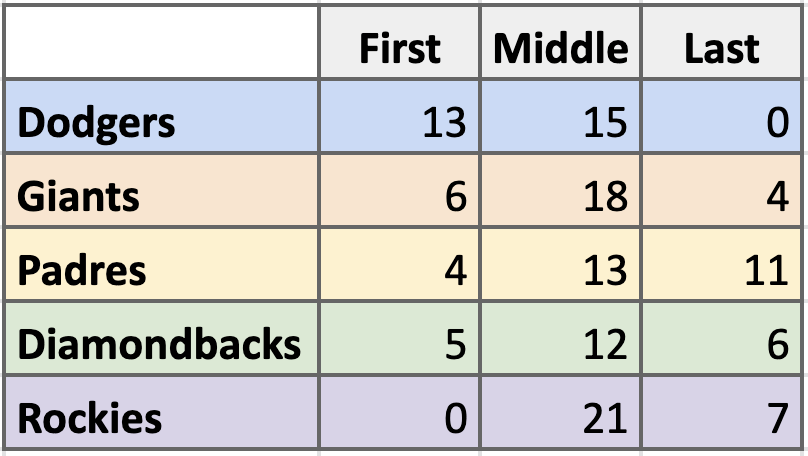© 2025 ALLCITY Network Inc.
All rights reserved.

Clowns to the left of me
Jokers to the right
Here I am
Stuck in the middle with you– Stealers Wheel
One of the most rewarding parts of getting to work in quantitative and qualitative research has been the opportunity to teach some of the guiding principles to the next generation of researchers coming along. When I am at a college or conference teaching about something like A/B testing, I often get a chance to look at the testing portfolios of companies or researchers. The first two things they always show me:
- How often they have won
- How often they have not lost (tied)
To which my responses are, in order:
- Sweet!
- Who cares?
In a research game like A/B testing, you’re trying to find out what matters to your visitor/consumer. Every time you win, you get to add those extra conversions on to your bottom line forever. Every time you lose, you figure that out as fast as you can before it hurts you. every time you tie, your consumer just told you, “I don’t care.”
But those losses can also show you where things are sensitive. Important. Just because whatever you tried that way failed spectacularly the first time, doesn’t mean you should stay away from it. It means you should figure out why it matters to the person on the other side so you can make it better for them. If you’re not winning, you’re losing, anyway. You might as well make them losses that can teach you something.
The world of professional sports shares some commonalities with A/B testing, in that if you are not winning, you’re losing. And in some ways, losing big might actually be a stronger strategy than trying not to fall. Though each league has tried to dissuade teams from competing for the bottom, each of them still rewards chances at the best draft prospects based on how far they fell. If you win it all? Sweet! If you don’t?
Who. Cares.
When the Colorado Rockies joined the crowded National League West in 1993, there were high hopes for what the future could bring. Minor league ball had long enjoyed a popular following in the state, which had long coveted a team for sports-hungry Coloradans. Although the dream ended up landing 37 games out of first place in that first season, the Rox still managed to avoid the division cellar, with the pitiful Padres landing six games behind them. Still, it was a special moment. Baseball in Colorado.
The NL West took its current five-team shape five seasons later with the addition of the Arizona Diamondbacks. With two expansion teams amongst their ranks, you’d have figured the California trio remaining – Los Angeles Dodgers, San Francisco Giants, and San Diego Padres would feast upon weaker opponents. True to expectation, the ’98 Diamondbacks sank straight to the bottom, a full 12 games behind fourth-place Colorado.
The next season would work out a little differently.
The 65-97 Diamondbacks would leapfrog the rest of the division on their way to a 100-win season the following year, taking the division and announcing themselves as a force to be reckoned with. They lost straightaway in the playoffs that year, but were only three years shy of their first championship. In a single season, Arizona had gone from worst to first in the NL West, the first of five times they have won the division.
It would take the Colorado Rockies another… uh… wait, let me check.
Oh, right. Never. The Rockies have never won the NL West. As a matter of fact, let me throw a few numbers at you.

A few things stand out in those, don’t they? Not only the zero in the first place column for the Rockies, but the zero in that last place column for the Dodgers. Yes, the “Middle” column seems outsized for every team, but remember that in a five-team division, you’ve got three shots at the middle every year.
It’s true, the Dodgers last finished in last place the season before Colorado joined the league, and most of their “middle” slot are often a game or two behind the first-place finisher, just as Colorado often finds themselves a few games away from the last-place finisher. Many of the teams who finished last saw a marked rebound in the following season, often finding themselves in the upper two slots the following year. While the Rockies have the second-most last place finishes amongst the group, it’s the solid lead they have in those damnable middle finishes that has them unable to crack that top spot.
All five of the NL West teams have been to a World Series in the last 209 years, with the Diamondbacks, Giants, and Dodgers bringing home rings. While the Padres have even more last place finishes, they’ve managed a few firsts in the mix as well. Would their fan base trade those first-place finishes for a few less lasts? Doubtful.
There are facets of baseball at altitude that make it a difficult task in the first place, and the economics of mid-market ball add another wrinkle. While a few of the methodologies the team has chased don’t always yield fruit, they’ve at least pushed a more polarizing result. While the team has taken heat for letting go of franchise icon Nolan Arenado, and takes even more for looking at further shedding, there may only be one way to finally reach the top. Take a few more risks, and be willing to spend more time at the bottom in the search.
But as long as the keep finding their way to another year somewhere in the middle?
Who cares?
Comments
Share your thoughts
Join the conversation



